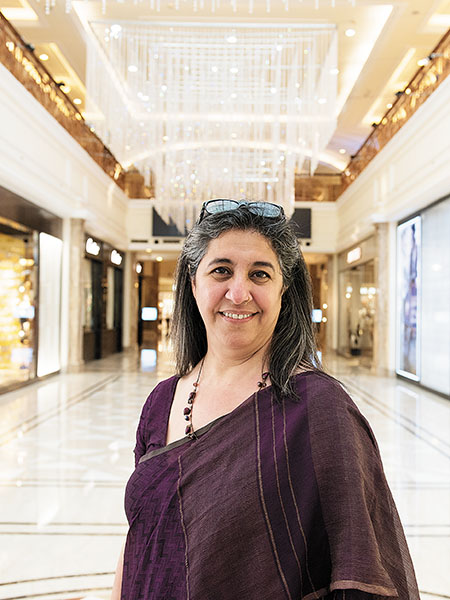
Luxury is all about the experience: Dinaz Madhukar
The executive vice president of DLF Luxury Retail and Hospitality on the steady growth of luxury retail in India

Q. Currently, what is the luxury retail space in India looking like?
A. A couple of years back it was fairly erratic, because of the number of policy changes, but right now we are in a steady and growing phase. There are many Indian luxury brands that are expanding and new brands that are looking to invest in the country, which means it is a positive environment for the luxury business in India right now.
Q. How many new brands are entering the country every year?
A. In the luxury space, there are about 6-10 new brands are entering India every year.
Q. In terms of geographies, how is the Indian luxury space divided? Any markets that are particularly well-known for its luxury experience?
A. The sensibilities in terms of luxury is very different for people up North, like in Delhi as compared to people in Bengaluru. People in Delhi like to enjoy what they have worked for in terms of materialistic pleasures in particular. Mumbai on the other hand, is a little more laid back; people don’t always need to 'show', they are comfortable shopping even from a Fashion Street and happily telling people ‘I got this from Fashion Street’. You will not see that happening in Delhi. From a brand’s point of view, it is very important to understand market before entering a country like India. Right now, Delhi is an important market for luxury retail and for any luxury brand entering India, the first point continues to be Delhi.
Q. Any expansion plans in the near future for DLF?
A. Currently we are very happy being Delhi-NCR based, with DLF Emporio and The Chanakya. We are not looking at expanding out of the country for now. As and when we decide to expand, it will first be in other domestic markets before we go international.
Q. Any notable trends that you have noticed in the Indian luxury market space?
A. Initially, it was the big brands, which started entering the country. There are many more niche brands that are now entering the country, because people are understanding luxury a lot more now, than they did earlier. The nuances of a niche brand like Berluti is appreciated now and accepted more easily. Recently, Indian brands, especially designers like Khosla Jani, Gaurav Gupta, Rohit Bal are expanding their portfolio into different products and exploring various horizons.
Q. In your opinion, to what extent would online shopping impact luxury retail?
A. I would think that this could happen more in products that are meant for the mass market, but not so much in the luxury space, because luxury is all about the experience. When you are spending X amount of money, you want the full worth of the money. The experience is all about walking into the mall and realizing the difference between that and any other brand. Additionally, no matter what happens there is a price point beyond which one is not comfortable paying on the internet, unless it is for a product that you know is standardized, like a mobile phone or a TV. However, luxury brands are using technology and social media channels in the best possible way to promote products and experiences online.
Q. What is your strategy when it comes to deciding what brands to onboard and how much space needs to be allocated to each brand?
A. We look at the luxury index to understand which of the players are doing well. We get each brand to share its global numbers with us, to analyse how they are doing country wise. Next, we review our own internal customer’s feedback, where we have our own comments cards with questions like, which brands are you using and what brands would you like to see at DLF Emporio. This tells us that customers are thinking of a certain brand, with that we decide what brands that we should onboard. We know how many brands we need to have in fashion, in accessories, in watches and jewellery so that no particular segment is over weighing the other. So even when there is a churn, we replace brands in each segment and maintain the overall ratio.
Q. How did the various policy changes that came about in the last few years impact the luxury retail space?
A. I have to admit, everything was not hunky-dory. When the policy changes came about, they were almost all together, at regular intervals, but by the time you adjusted to one the next change came about. It was a little bit of a setback, but we worked with our brands closely and did a lot more focused marketing initiatives to bring back the customers. It took a while, but since the last policy change, the market growth has been pretty steady and healthy.
Q. Any significant differences in consumers in India as opposed to consumers internationally?
A. The global luxury consumers are more evolved, as they have been experiencing luxury a lot more, and it is a part of their lifestyle. There are certain brands they are accustomed to, and then they are loyal to that brand. But the Indian consumer is experiencing newer brands every day. Consumers are trying different brands to see what suits their aesthetics and their personal style. So you find a lot more experimentation happening by the Indian consumer, and they are also open to a mix and match.
(This story appears in the 26 October, 2018 issue of Forbes India. To visit our Archives, click here.)
Post Your Comment















